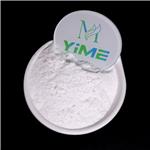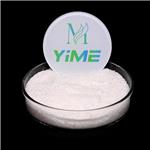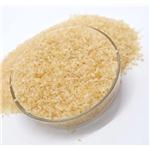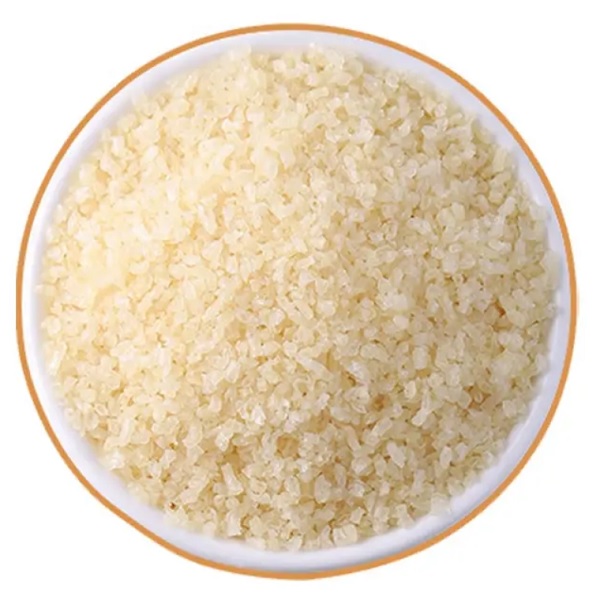- GELATIN
-

- $10.00/ kg
-
2024-04-19
- CAS:9000-70-8
- Min. Order: 100kg
- Purity: 99%
- Supply Ability: 1000kg
- Bovine GELATIN
-

- $10.00/ kg
-
2024-04-19
- CAS:9000-70-8
- Min. Order: 100kg
- Purity: 99%
- Supply Ability: 1000kg
- Gelatin
-

- $0.00 / 1kg
-
2024-03-29
- CAS:9000-70-8
- Min. Order: 1kg
- Purity: 99%
- Supply Ability: 20tons
Related articles - The-widely-applications-of-Gelatin
- Gelatin is a biopolymer that is prepared by thermal denaturalization of collagen. It is widely used in food, pharmaceutical, a....
- Oct 8,2023
|
| | Gelatin Basic information |
| | Gelatin Chemical Properties |
| Melting point | >226°C (dec.) | | density | 1.2 | | storage temp. | 2-8°C | | solubility | H2O: 67 mg/mL at 50 °C, slightly hazy, slightly yellow | | form | powder | | pka | pKa 3.7to4.5(H2O t=25 I=0.00 N2atmosphere) (Uncertain) | | color | Pale yellow to beige | | Odor | Musty odour | | PH Range | 4 - 7 at 66.7 g/l at 60 °C | | PH | 4.0-6.0 (25℃, 67mg/mL in H2O) | | Water Solubility | SOLUBLE IN HOT WATER | | Merck | 13,4393 | | Stability: | Stable. Hygroscopic. Incompatible with strong oxidizing agents. | | EPA Substance Registry System | Gelatins (9000-70-8) |
| | Gelatin Usage And Synthesis |
| Description | Gelatin does not occur in nature as such, but is derived by hydrolysis of collagen, the chief protein component in connective tissues of the animal body. The major sources of collagen are cattle hides, pig skins and bones. The resulting gelatin is of two types commonly designated A and B, depending upon which of two processes are used to convert the collagen into gelatin. Type A gelatin is derived primarily from pig skin by acid processing; it has an isoelectric point between pH 7 and pH 9. Type B is from cattle hides and bones by alkaline or lime processing and has an isoelectric point between pH 4.7 and pH 5.1. | | Chemical Properties | white to slightly yellow powder, also knownas glutin,is a protein found in many animal tissues including skin, cartilage, horn, and bone. Gelatin is used in leather dressings, in photography, in metallurgy, in the plastics industry, and in pharmaceuticals. | | Physical properties | Gelatin is colorless or slightly yellow, transparent, brittle, practically odorless, tasteless, presenting as sheets, flakes or a coarse powder. On being warmed, gelatin disperses into the water resulting in a stable suspension. Water solutions of gelatin will form a reversible gel if cooled below the specific gel point of gelatin. The gel point is dependent on the source of the raw material. Gelatin extracted from the tissues of warm-blooded animals will have a gel point in the range of 30°C - 35°C. Gelatin extracted from the skin of cold-water ocean fish will have a gel point in the range of 5°C - 10°C. Gelatin is soluble in aqueous solutions of polyhydric alcohols such as glycerin and propylene glycol.
 | | Occurrence | Gelatin is a protein obtained by partial hydrolysis of collagen, the chief protein component in skin, bones, hides, and white connective tissues of the animal body. Type A gelatin is produced by acid processing of collagenous raw material; type B is produced by alkaline or lime processing. Because it is obtained from collagen by a controlled partial hydrolysis and does not exist in nature, gelatin is classified as a derived protein. Animal glue and gelatin hydrolysate, sometimes referred to as liquid protein, are products obtained by a more complete hydrolysis of collagen and can thus be considered as containing lower molecular-weight fractions of gelatin. | | History | Extraction of gelatin for use as a glue by cooking hides dates back to the earliest recorded history of man and appears in the literature of the items up to the present day. During the early years of the Napoleonic era it was manufactured on a large scale in an attempt to alleviate the food shortages resulting from the English naval blockade of Europe. Gelatin was first manufactured in the U.S. in 1809. In 1845 a U.S. patent was granted for a gelatin which contained all the ingredients fitting it for table use, and required only the addition of hot water and subsequent cooling to prepare it for serving. | | Uses | gelatin is used as a natural sealant against moisture loss and as a formulation thickener. The films produced by gelatin are tacky when moist and hard, and brittle when dry. It is obtained by the partial hydrolysis of mature collagen derived from the skin, connective tissue, and bones of animals. It does not have the waterbinding ability of soluble collagen. | | Uses | As stabilizer, thickener and texturizer in food; manufacture of rubber substitutes, adhesives, cements, lithographic and printing inks, plastic Compounds, artificial silk, photographic plates and films, matches, light filters for mercury lamps; clarifying agent; in hectographic masters; sizing paper and textiles; for inhibiting crystallization in bacteriology, for preparing cultures. Pharmaceutic aid (suspending agent; encapsulating agent; tablet binder; tablet and coating agent). Gelatin is a hydrophilic chemical useful in histochemistry, bacterial culture media and light microscope autoradiography. | | Uses | Gelatin is a protein that functions as a gelling agent. it is obtained
from collagen derived from beef bones and calf skin (type b) or pork
skin (type a). type b is derived from alkali-treated tissue and has an
isoelectric point between ph 4.7 and 5.0. type a is derived from
acid-treated tissue and has an isoelectric point between ph 7.0 and
9.0. it forms thermally reversible gels which set at 20°c and melt at
30°c. the gel strength is measured by means of a bloom gellometer
and ranges from 50 to 300 with a 250 bloom being the most common.
it is used in desserts at 8–10% of the dry weight, in yogurt at 0.3–0.5%,
in ham coatings at 2–3%, and in confectionery and capsules at
1.5–2.5%. | | Production Methods | Gelatin is extracted from animal tissues rich in collagen such as skin,
sinews, and bone. Although it is possible to extract gelatin from
these materials using boiling water, it is more practical to first
pretreat the animal tissues with either acid or alkali. Gelatin
obtained from the acid process is called type A, whereas gelatin
obtained from the alkali process is called type B.
The acid-conditioning process (manufacture of type A gelatin) is
restricted to soft bone ossein (demineralized bones), sinew, pigskin,
calfskin and fish skins for reasons of gaining sufficient yield. The
material is cut in pieces and washed in cold water for a few hours to
remove superficial fat. It is then treated with mineral acid solutions,
mainly HCl or H2SO4, at pH 1–3 and 15–20°C until maximum
swelling has occurred. This process takes approximately 24 hours.
The swollen stock is then washed with water to remove excess acid,
and the pH is adjusted to pH 3.5–4.0 (pigskin, fish skin) or 2.0–3.5
(all other tissues) for the conversion to gelatin by hot-water
extraction.
The hydrolytic extraction is carried out in a batch-type operation
using successive portions of hot water at progressively higher
temperatures (50–75°C) until the maximum yield of gelatin is
obtained. The gelatin solution is then filtered through previously
sterilized cellulose pads, deionized, concentrated to about 20–25%
w/v and sterilized by flashing it to 138°C for 4 seconds. The dry
gelatin is then formed by chilling the solution to form a gel, which is
air-dried in temperature-controlled ovens. The dried gelatin is
ground to the desired particle size.
In the alkali process (liming), demineralized bones (ossein) or
cattle skins are usually used. The animal tissue is held in a calcium
hydroxide (2–5% lime) slurry for a period of 2–4 months at
14–18°C. At the end of the liming, the stock is washed with cold
water for about 24 hours to remove as much of the lime as possible.
The stock solution is then neutralized with acid (HCl, H2SO4,
H3PO4) and the gelatin is extracted with water in an identical
manner to that in the acid process, except that the pH is kept at
values between 5.0–6.5 (neutral extraction).
During the preparation of the bovine bones used in the
production of gelatin, specified risk materials that could contain
transmissible spongiform encephalopathies (TSEs) vectors are
removed. TSE infectivity is not present in pharmaceutical grade
gelatin. | | Definition | A pale yellow
protein obtained from the bones, hides,
and skins of animals, which forms a colloidal
jelly when dissolved in hot water. It
is used in jellies and other foods, to make
capsules for various medicinal drugs, as an
adhesive and sizing medium, and in photographic
emulsions. | | General Description | Gelatin, NF, is a protein obtained by the partial hydrolysis of collagen, an albuminoid found in bones, skin, tendons, cartilage, hoofs, and other animal tissues. Gelatin is used in the preparation of capsules, in the coating of tablets, and, with glycerin, as a vehicle for suppositories. It has also been used as a vehicle when slow absorption is desired for drugs. | | Agricultural Uses | Gelatin is a colorless or pale yellow water-soluble protein obtained by boiling collagen with water and evaporating the water. It is an ingredient in jellies and baked goods. It is also used to make medicinal capsules, and coat photographic films. | | Pharmaceutical Applications | Gelatin is widely used in a variety of pharmaceutical formulations, including its use as a biodegradable matrix material in an implantable delivery system, although it is most frequently used to form either hard or soft gelatin capsules.
Gelatin capsules are unit-dosage forms designed mainly for oral administration. Soft capsules on the market also include those for rectal and vaginal administration. Hard capsules can be filled with solid (powders, granules, pellets, tablets, and mixtures thereof), semisolid and liquid fillings, whereas soft capsules are mainly filled with semisolid or liquid fillings. In hard capsules, the active drug is always incorporated into the filling, while in soft capsules the drug substance can also be incorporated into the thick soft capsule shell. Gelatin is soluble in warm water (>30°C), and a gelatin capsule will initially swell and finally dissolve in gastric fluid to release its contents rapidly.
Gelatin is also used for the microencapsulation of drugs, where the active drug is sealed inside a microsized capsule or beadlet, which may then be handled as a powder. The first microencapsulated drugs (beadlets) were fish oils and oily vitamins in gelatin beadlets prepared by coacervation.
Low-molecular-weight gelatin has been investigated for its ability to enhance the dissolution of orally ingested drugs. Ibuprofen–gelatin micropellets have been prepared for the controlled release of the drug. Other uses of gelatin include the preparation of pastes, pastilles, pessaries, and suppositories. In addition, it is used as a tablet binder and coating agent, and as a viscosity-increasing agent for solutions and semisolids.
Therapeutically, gelatin has been used in the preparation of wound dressings and has been used as a plasma substitute, although anaphylactoid reactions have been reported in the latter application. Absorbable gelatin is available as sterile film, ophthalmic film, sterile sponge, sterile compressed sponge, and sterile powder from sponge. Gelatin sponge has hemostatic properties.
Gelatin is also widely used in food products and photographic emulsions. | | Biochem/physiol Actions | Gelatin from fish skin can be used in the preparation of various gels based on their gelling characteristics. It can also be used as an additive in surimi processing to enhance the functional and mechanical properties of gel. | | Safety Profile | An experimental teratogen. Experimental reproductive effects. When heated to decomposition it emits acrid smoke and irritating fumes. | | Safety | Gelatin is widely used in a variety of pharmaceutical formulations,
including oral and parenteral products.
In general, when used in oral formulations gelatin may be
regarded as a nontoxic and nonirritant material. However, there
have been rare reports of gelatin capsules adhering to the
esophageal lining, which may cause local irritation. Hypersensitivity
reactions, including serious anaphylactoid reactions, have
been reported following the use of gelatin in parenteral products.
There have been concerns over the potential spread of BSE/TSE
infections through bovine derived products. However, the risk of
such contamination of medicines is extremely low.
LD50 (rat, oral): 5 g/kg
TDLo (mouse, IP): 700 mg/kg | | storage | Dry gelatin is stable in air. Aqueous gelatin solutions are also stable
for long periods if stored under cool conditions but they are subject
to bacterial degradation. At temperatures above about 50°C,
aqueous gelatin solutions may undergo slow depolymerization and
a reduction in gel strength may occur on resetting. Depolymerization
becomes more rapid at temperatures above 65°C, and gel
strength may be reduced by half when a solution is heated at 80°C
for 1 hour. The rate and extent of depolymerization depends on the
molecular weight of the gelatin, with a lower-molecular-weight
material decomposing more rapidly.Dry gelatin is stable in air. Aqueous gelatin solutions are also stable
for long periods if stored under cool conditions but they are subject
to bacterial degradation.(4) At temperatures above about 50°C,
aqueous gelatin solutions may undergo slow depolymerization and
a reduction in gel strength may occur on resetting. Depolymerization
becomes more rapid at temperatures above 65°C, and gel
strength may be reduced by half when a solution is heated at 80°C
for 1 hour. The rate and extent of depolymerization depends on the
molecular weight of the gelatin, with a lower-molecular-weight
material decomposing more rapidly.
Gelatin may be sterilized by dry heat.
The bulk material should be stored in an airtight container in a
cool, well-ventilated and dry place. | | Incompatibilities | Gelatin is an amphoteric material and will react with both acids and
bases. It is also a protein and thus exhibits chemical properties
characteristic of such materials; for example, gelatin may be
hydrolyzed by most proteolytic systems to yield its amino acid
components.
Gelatin will also react with aldehydes and aldehydic sugars,
anionic and cationic polymers, electrolytes, metal ions, plasticizers,
preservatives, strong oxidizers, and surfactants. It is precipitated by
alcohols, chloroform, ether, mercury salts, and tannic acid. Gels can
be liquefied by bacteria unless preserved.
Some of these interactions are exploited to favorably alter the
physical properties of gelatin: for example, gelatin is mixed with a
plasticizer, such as glycerin, to produce soft gelatin capsules and
suppositories; gelatin is treated with formaldehyde to produce
gastroresistance. | | Regulatory Status | GRAS listed. Included in the FDA Inactive Ingredients Database
(dental preparations; inhalations; injections; oral capsules, pastilles,
solutions, syrups and tablets; topical and vaginal preparations).
Included in medicines licensed in the UK, Europe, and Japan.
Included in the Canadian List of Acceptable Non-medicinal
Ingredients. |
| | Gelatin Preparation Products And Raw materials |
|